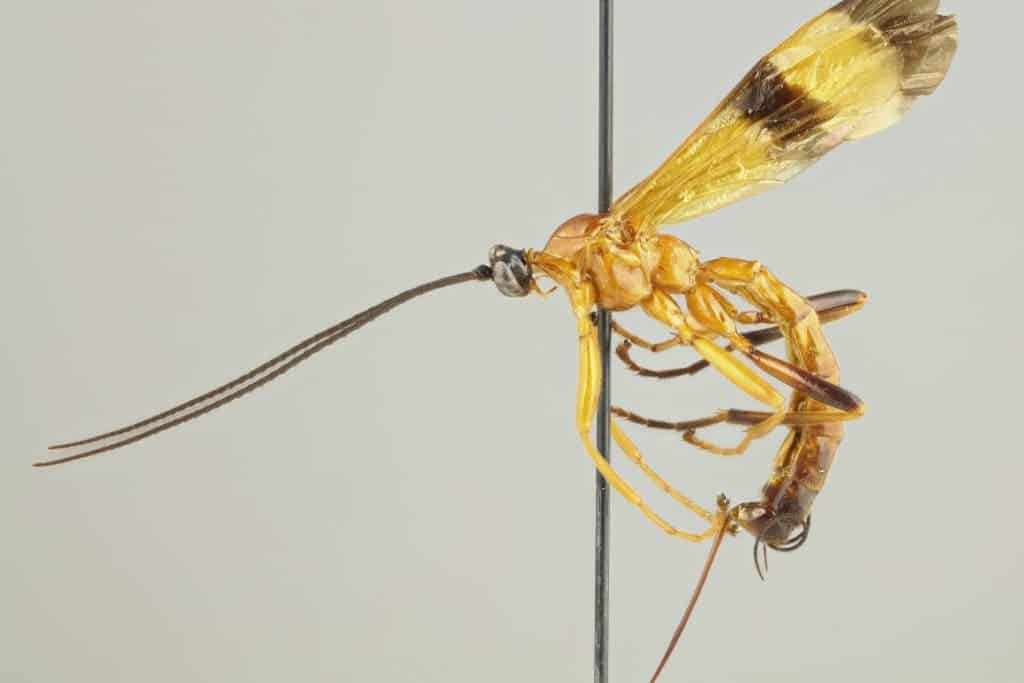A newly-discovered parasitoid wasp from South America can alter the behavior of its host spiders.
Do you find wasps terrifying? Then brace yourself: there are mind-controlling wasps in the rainforests of the Amazon and the cloud forests of the Andes. Fifteen species of them.

No need to break out in terrified screaming, however: their hosts of choice are spiders, not humans.
Fifteen shades of ‘Nope!’
The discovery of the fifteen new species was reported on by a group of researchers from the Biodiversity Unit of the University of Turku who specialize in parasitoid wasps. What is a parasitoid wasp? I’m so glad you asked, it’s terrifying.
Parasitoid wasps aren’t full-blown parasites, but they’re not not-parasites, either. They’re parasites because they need a host body to breed: the wasps have to inject their eggs into the bodies of other insects. Depending on the species, this leads to one of two very, very unenviable outcomes: the eggs hatch into a larva which lives either inside or on the surface of their host. In the first case, the host is allowed to live normally until the eggs hatch and the larva starts eating it from the inside out. The second scenario probably sounds less horrifying, but no — wasp larvae that develop outside the host are idiobiont, meaning they completely paralyze their host. And then eat them.
In either case, this eventually and slowly leads the host’s (I assume welcomed) death.
They definitely won’t win any contest for ethical reproduction practices, but the parasitoid wasp taxon is definitely successful, being one of the most species-rich families of animals on Earth.
One region where their diversity is still poorly known is in the tropics. The authors of the current paper were investigating the lowland rainforests of the Amazon and the cloud forests of the Andes in order to record parasitoid species in the area, a project that has been underway for almost 20 years now. They report finding 15 new, sizeable species of wasp in the genus Acrotaphus, which parasitize spiders.
But these wasps are especially interesting in a nightmarish sort of way, even for their taxa. When a female Acrotaphus attacks a spider, it temporarily paralyzes it with a venomous sting. A single egg is then laid on the spider, which hatches into a larva — this larva, the team found, can alter the behavior of its host in a very complex way.
“During the time period preceding the host spider’s death, it does not spin a normal web for catching prey. Instead, the parasitoid wasp manipulates it into spinning a special web which protects the developing pupa from predators,” says Ilari E. Sääksjärvi, Professor of Biodiversity research from the University of Turku and co-author of the paper.
“Host manipulation is a rare phenomenon in nature, which makes these parasitoid wasps very exciting in terms of their evolution.”
It’s not an even battle for the spider, either. The largest species the team found can grow multiple centimeters in length.
The paper “eview of the New World genus Acrotaphus Townes, 1960 (Hymenoptera: Ichneumonidae: Pimplinae), with descriptions of fifteen new species” has been published in the journal Zootaxa.


